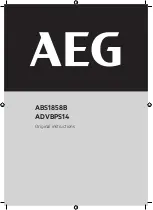
Gun
Gun
Gun Overview
Overview
Overview
How
How
How the
the
the Electrostatic
Electrostatic
Electrostatic Spray
Spray
Spray Gun
Gun
Gun
Works
Works
Works
The air hose supplies air to the spray gun. Part of the
air operates the alternator turbine and the rest of the
air atomizes the fluid being sprayed.
The alternator generates power, which is converted
by the power cartridge to supply high voltage to the
gun’s electrode.
The pump supplies fluid to the fluid hose and gun,
where the fluid is electrostatically charged as it
passes the electrode. The charged fluid is attracted
to the grounded workpiece, wrapping around and
evenly coating all surfaces.
Spraying
Spraying
Spraying Waterborne
Waterborne
Waterborne Fluids
Fluids
Fluids
Electrostatically
Electrostatically
Electrostatically
This electrostatic air spray gun is designed to
spray only
only
only waterborne fluids which meet one of the
following flammability requirements:
• FM,
FM,
FM, FMc
FMc
FMc Approved:
Approved:
Approved:
Material does not sustain burning in accordance
with the Standard Test Method for Sustained
Burning of Liquid Mixtures, ASTM D4206.
• CE-EN
CE-EN
CE-EN 50059
50059
50059 Compliant:
Compliant:
Compliant:
Material is classified as non-ignitable as defined by
EN 50059: 2018.
For more information, see
Ignitability of Coating Materials, page 92
.
When connected to a voltage isolation system,
all of the fluid in the spray gun, fluid hose, and
isolated fluid supply is charged to high voltage,
which means that the system has more electrical
energy than a solvent-based system. Therefore,
only non-flammable fluids (as defined under
) can be sprayed with the gun or be
used to clean, flush, or purge the gun.
Precautions must be taken when using electrostatic
waterborne equipment to avoid potential shock
hazards. When the spray gun charges the isolated
fluid to high voltage, it is similar to charging a
capacitor or a battery.
The system will store some of the energy while
spraying and retain some of that energy after the
spray gun is shut off. Because it takes some time
for that stored energy to discharge, it is important
to read the instructions, including the
Discharge and Grounding Procedure, page 33
, and
, to understand when you can
approach or touch the gun nozzle.
The amount of time it takes to discharge the
energy depends on the system design. Follow the
Fluid Voltage Discharge and Grounding Procedure,
page 33
, before approaching the front of the gun.
3A7504A
7








































